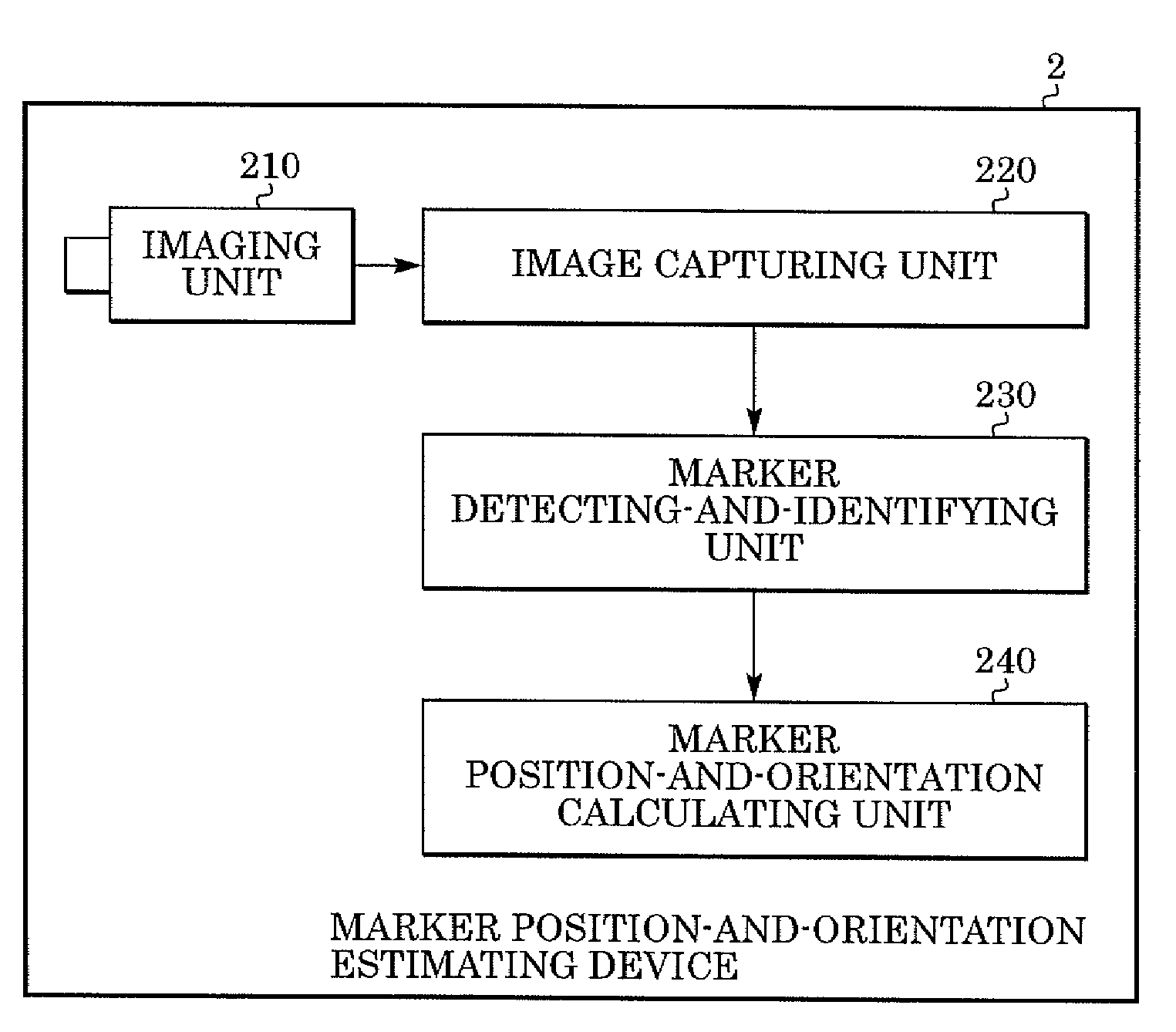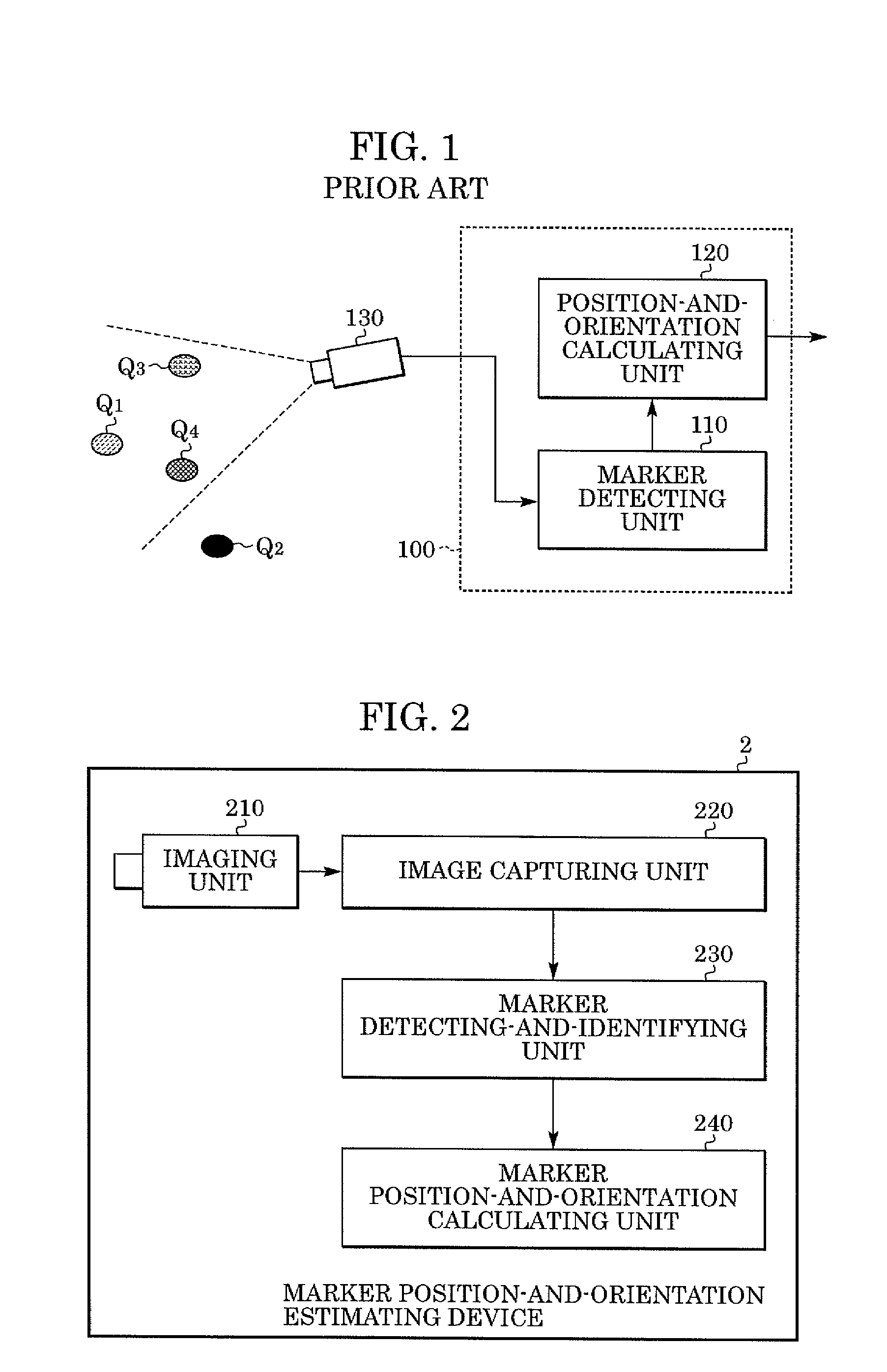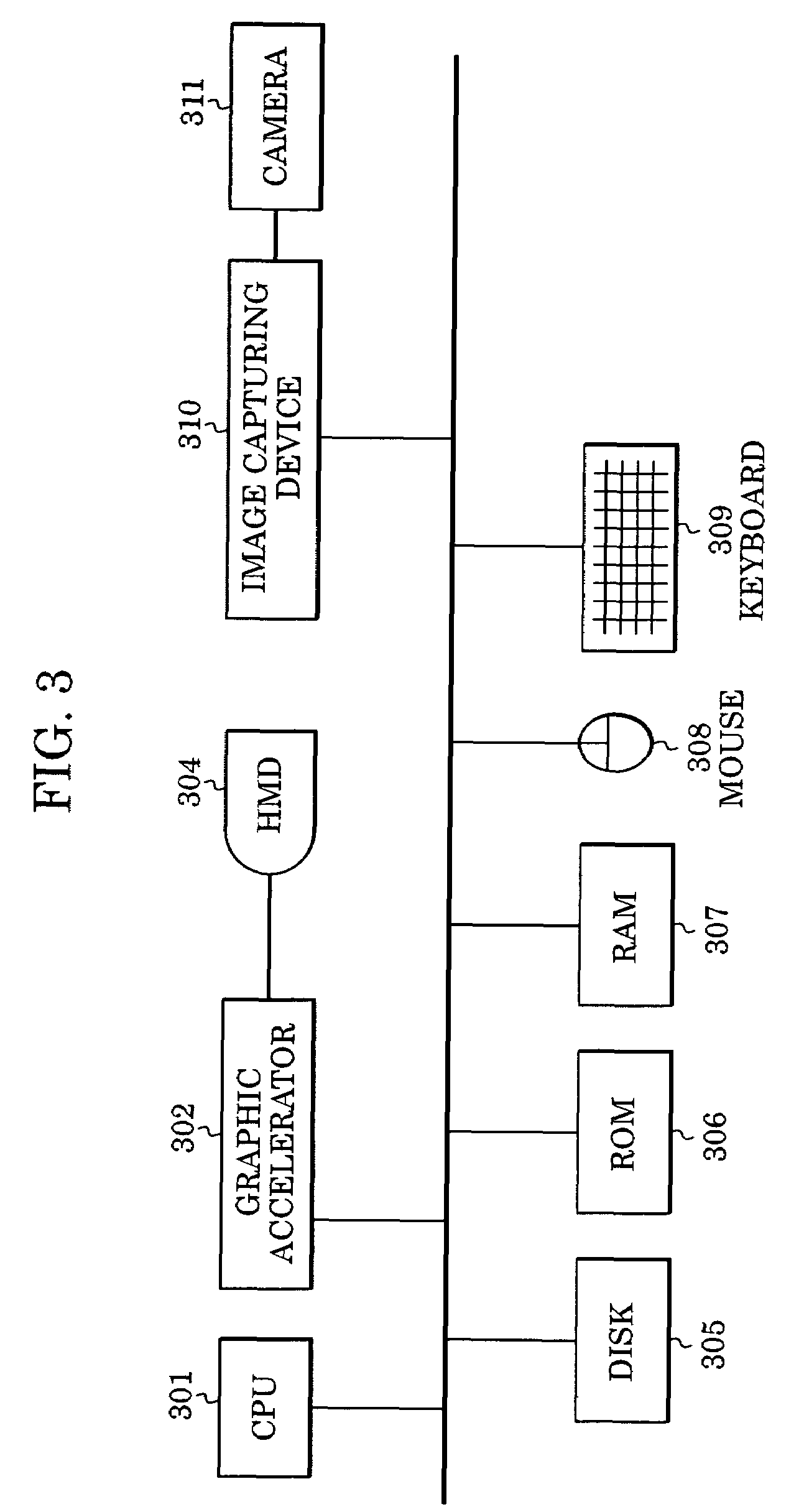Placement information estimating method and information processing device
a technology of information processing device and placement information, which is applied in the field of placement information estimating method and information processing device, can solve the problems of inability to obtain accurate placement information of markers, obtained simultaneously,
- Summary
- Abstract
- Description
- Claims
- Application Information
AI Technical Summary
Benefits of technology
Problems solved by technology
Method used
Image
Examples
first embodiment
[0045]FIG. 2 is a block diagram illustrating the functional configuration of a marker position-and-orientation estimating device 2 according to the present embodiment. An imaging unit 210 is a camera, which photographs a scene in which markers are disposed. An image capturing unit 220 inputs an image photographed by the imaging unit 210 to a computer. A marker detecting-and-identifying unit 230 detects markers from the image input to the computer from the image capturing unit 220, and identifies each detected marker. A marker position-and-orientation calculating unit 240 calculates the position and orientation of each marker based on the marker detection results of the marker detecting-and-identifying unit 230.
[0046]FIG. 3 is a block diagram illustrating the hardware configuration of the marker position-and-orientation estimating device 2 according to the present embodiment. The hardware configuration illustrated in FIG. 3 is the same configuration as that of a common personal compu...
second embodiment
[0118]With the first embodiment, the projection error (a sum of error between the calculated position of the projected position and the observed position) regarding point markers and the projection error of square markers are subjected to the least mean square method simultaneously by obtaining correction values regarding the positions of the point markers, and the positions and orientations of the square markers simultaneously, thus obtaining the positions of the point markers and the positions and orientations of the square markers accurately. With the second embodiment, the positions of point markers and the positions and orientations of square markers are obtained accurately by alternately repeating obtaining the positions of the point markers, and the positions and orientations of the square markers.
[0119]FIG. 10 is a flowchart illustrating procedures for obtaining the positions of point markers, and the positions and orientations of square markers according to the second embod...
third embodiment
[0131]With the first and second embodiments, estimation of the positions and orientations of markers have been performed following the images of scenes including markers being photographed with the imaging device. With the third embodiment, estimation is performed based on the images stored in the storage device beforehand, thus performing offline processing.
[0132]FIG. 11 is a block diagram illustrating the functional configuration of a marker position-and-orientation estimating device 3 according to the third embodiment. The marker position-and-orientation estimating device 3 includes an image storing unit 350, image capturing unit 320, marker detecting-and-identifying unit 330, and marker position-and-orientation calculating unit 340. Description is made below regarding the procedures of marker position-and-orientation estimation in the marker position-and-orientation estimating device 3.
(1. Capturing of Images)
[0133]N images of scenes including markers are photographed beforehand...
PUM
 Login to View More
Login to View More Abstract
Description
Claims
Application Information
 Login to View More
Login to View More - R&D
- Intellectual Property
- Life Sciences
- Materials
- Tech Scout
- Unparalleled Data Quality
- Higher Quality Content
- 60% Fewer Hallucinations
Browse by: Latest US Patents, China's latest patents, Technical Efficacy Thesaurus, Application Domain, Technology Topic, Popular Technical Reports.
© 2025 PatSnap. All rights reserved.Legal|Privacy policy|Modern Slavery Act Transparency Statement|Sitemap|About US| Contact US: help@patsnap.com



